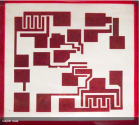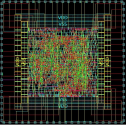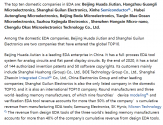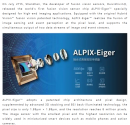You are using an out of date browser. It may not display this or other websites correctly.
You should upgrade or use an alternative browser.
You should upgrade or use an alternative browser.
Chinese semiconductor industry
- Thread starter Hendrik_2000
- Start date
- Status
- Not open for further replies.
乌有之乡?Not worth the read.
I think that one thing to keep in mind is if Japan with x10 less population and also, like china, starting late can master upstream and downstream of semiconductor (sans EUVL machine) and adjecent industries, there is zero reason to expect china not catching up (or even surpassing) the leading edge.
I think that one thing to keep in mind is if Japan with x10 less population and also, like china, starting late can master upstream and downstream of semiconductor (sans EUVL machine) and adjecent industries, there is zero reason to expect china not catching up (or even surpassing) the leading edge.
In 1980 when Japan was mastering semiconductors, the transistor count of the average chip was around 50,000. Now it's 50 billion. The industry. Is not. The same. At all.
Architectures for Matrix Extension in CPU | Jiang Zhao, Alibaba Cloud
Recent rapid development of various applications represented by Deep Learning (DL) calls for a much-needed increase in established chip matrix computing capability. Therefore, CPU manufacturers strive to better support matrix instruction extension with the latest products like the Advanced Matrix Extensions (AMX) from Intel[1], the Scalable Matrix Extension (SME) from Arm[2], and the Matrix-Multiply Assist (MMA) from Power[3]. This blog summarizes and explores two different architecture choices of the matrix extension in a CPU.
Looks like Alibaba is proposing RISC-V extensions for matrix calculations.
Wow... 50 billion... that really puts things in perspective. That's almost as many as your alts, tidalwave.In 1980 when Japan was mastering semiconductors, the transistor count of the average chip was around 50,000. Now it's 50 billion. The industry. Is not. The same. At all.
Almost.
But also consider back them most equipment, device and material was basically designed at hand, they didn't have supercomputers to simulate billions of raytraced rays to optimize the optics of lithography equipment or make complex Multiphysics simulations to study the flow of chemicals in plasma etching equipment or the EDA tools to simulate billions of transistors or even the CAD tools that we have today that REALLY cut time on development. So yes equipment was simpler back them but modern design tools are way better than in the past. For god sake even mask design was done by hand.In 1980 when Japan was mastering semiconductors, the transistor count of the average chip was around 50,000. Now it's 50 billion. The industry. Is not. The same. At all.


- Status
- Not open for further replies.



